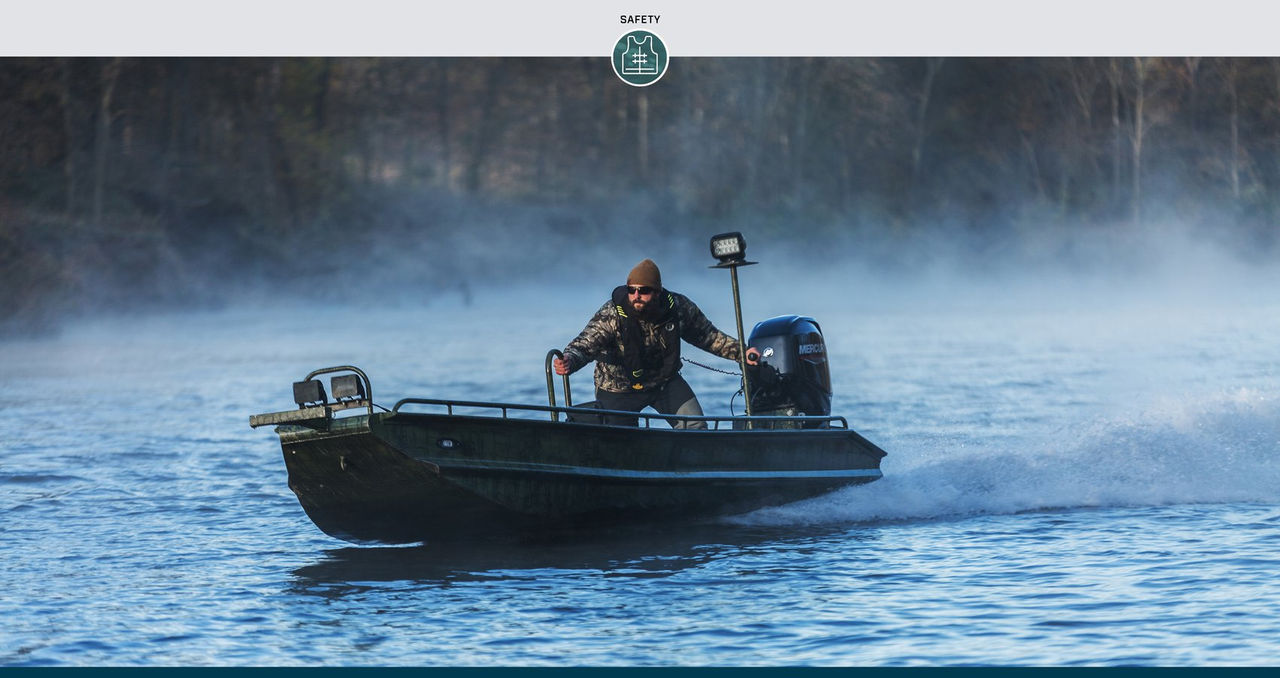No one enjoys being out on the water in foggy conditions, and certainly the safest solution is to wait out a dense fog on shore or in the slip. Still, if you go boating enough, sooner or later you’re bound to wind up out in the thick of it. Sometimes you’ll encounter unexpected patches here or there on a long cruise, and sometimes the weather forecast is just plain wrong. Whatever the reason, if you suddenly find yourself enveloped in a fog, navigating your boat just became a whole lot more difficult. Use these five tips to make sure you get back to the marina or boat ramp safely.
1. Reduce your speed. We can’t say exactly how much you should slow down, since different fog banks restrict visibility to different levels. The U.S. Coast Guard terms it like this: “Maintain a safe speed at all times to avoid collision.” In the real world this doesn’t simply mean going slow enough to stop in time to avoid hitting something, because that “something” could be another boat cruising toward you. To account for this, it’s smart to play it safe and go about half as fast as you think you could be going, to have enough time to spot other boats or obstructions.
2. Turn on your running lights and activate the appropriate sound signals. Fog, like darkness, is a time of “restricted visibility,” according to the boating Rules of the Road. That necessitates putting on your running lights (or anchor light if you’re at anchor). You’re also required to give a sound signal of one prolonged blast (four to six seconds) at least every two minutes, for powerboats underway. In between blasts, listen for the sound signals of other boats so you’ll be aware of it when one draws close. If you hear another boat, sound your horn and slow your speed to just fast enough to maintain course. Then navigate appropriately to safely avoid the other vessel.
3. Stay away from and/or get away from high-traffic areas like inlets, shipping channels and channel markers. You may be the most competent boater in the world, but you can’t control what other people do. Stopping in areas like these is a very bad move since you never know who will be cruising around and how careful they might be. While it may seem reassuring to have a channel marker in sight, remember that many people will be navigating via electronics in the fog, which means they’ll often head directly for those markers they see on their chartplotters, funneling traffic into the area. So, giving them a wide berth is a good move.
4. Don’t stare out at the fog, but instead look at the intersection of the water and the fog. When peering into an endless abyss, it’s very easy to become disoriented and steer your boat in circles. Looking at the intersection between the water and the fog gives you a semi-solid reference point, and helps you steer the boat in a more or less straight line. It’s also helpful to have someone aboard look aft, watch the boat’s propwash for indications of meandering turns and alert you if they see the boat veering off course. Don’t look over your shoulder to look aft yourself, however, because when you turn around to look forward again you’ll have lost all point of reference.
5. If possible, wait it out. Quite often in many areas, fog will set in early but burn off as the day progresses. If it’s relatively early in the day and you’re in sheltered waters without much traffic, consider stopping your boat and dropping the anchor. You still need to remain alert, maintain a watch and hit your sound signal (though at anchor it’s a bit different: a short one-second blast, then a prolonged blast, followed by a final short blast). But when you’re not comfortable running the boat and the situation is appropriate, simply waiting for the fog to go away makes a lot of sense.
Safety is always the top priority on the water. When it comes to fog, it’s not always possible to accurately predict when low-visibility conditions will develop. If you suspect there’ll be foggy conditions, it’s best to play it safe and wait it out on dry land. If you do wind up on the water in a fog, make sure you’re prepared. Review the tips here, as well as the safety regulations and advice from the U.S. Coast Guard Boating Safety Division, available at USCGboating.org. With a little preparation and careful judgment, you can help ensure every trip out ends safely back at the dock.




